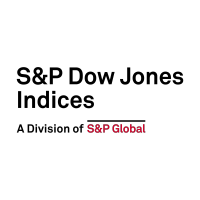Tag Archives: VIX
Dispersion at All-Time High Relative to Volatility as Earnings Season Arrives
Despite a recent uptick to a more normal level near 16, the Cboe Volatility Index (VIX®) has averaged around just 12.8 over the past 30 trading days as of July 18, indicating relative calm in U.S. equities. Meanwhile, a complementary measure of U.S. equity market risk, the CBOE S&P 500® Dispersion Index (DSPX), has surged…
- Categories Equities
- Other Tags
- Categories
- Equities
- Other Tags
Why Does the S&P 500 Matter to the Middle East?
Explore the expanding ecosystem of the iconic S&P 500 as S&P DJI’s Tim Edwards joins Cboe’s Sarju Gudka for a closer look at how and why market participants are putting the definitive gauge of U.S. large-cap equities to work in the Middle East.
- Categories Equities, S&P 500 & DJIA
- Other Tags
Tracking Potential Opportunities with Dispersion
Is it possible to track opportunity with an index? Find out as S&P DJI’s Tim Edwards and Cboe’s Mandy Xu discuss the design of and practical applications for the Cboe S&P 500 Dispersion Index.
- Categories Equities
- Other Tags
Happy Days for How Long?
With less than a month left to go to close out the year, it’s a good time to reflect on the highs and lows that market participants have experienced. While the year began with a rocky start due to the Silicon Valley Bank collapse, the market continued to power forward, stumbling in Q3 as 10-year…
- Categories Equities, Fixed Income, S&P 500 & DJIA
- Other Tags
Introducing the Dispersion Index (DSPX)
At 9:45 am Eastern Time on Sept. 27, 2023, a new index began publishing under the ticker DSPXSM, with an initial live value of 26.81. This index, the Cboe S&P 500® Dispersion Index (the Dispersion Index to its friends), might be loosely described as a “VIX® for dispersion.” But what is it? Why is it…
- Categories Equities
- Other Tags
29 Years of VIX
In 1993, the Chicago Board Options Exchange (Cboe) announced the launch of the Cboe Market Volatility Index or VIX®, which provides market participants with a barometer to measure market sentiment. Since then, the index has become one of the most followed benchmarks. In commemoration for its 29th anniversary, we take a look at the evolution…
- Other Tags
Markets Remained Volatile, But History Shows Return to Calm
The Russia-Ukraine conflict is now in its third week and markets remain volatile. The major U.S. equity benchmarks dropped about 10% from their peaks, with the exception of the Energy sector. The CBOE Volatility Index (VIX®), the so-called “fear gauge,” has been hovering above 30, which is the 90th percentile of its historical value. Its…
- Other Tags
While Fixed Income Yields Remain Low, Theta Gang Generates Income through Covered Calls
In response to the economic ravages of COVID-19, central banks and investors around the world went on a bond buying spree, pushing fixed income yields down and complicating the search for portfolio-generated income. While yields are generally off their March 2020 extremes, by historical standards they remain quite diminished. One alternative strategy to generate supplemental…
- Categories Fixed Income, Strategy
- Other Tags
VIX Back to Normal? Not Really
The U.S. equities market had a wild start in 2020. Following the March 2020 sell-off, the S&P 500® posted its largest monthly gain (12.8%) since 1987. Meanwhile, VIX® went from its long-term median to an all-time high within a month before it settled around 30. One thing that has been debated lately is whether VIX,…
- Categories Equities
- Other Tags
Exploring VIX® in Volatile Markets
How can VIX data help us understand the current market environment? S&P DJI’s Tim Edwards explores what recent historical highs for VIX could mean for equity and commodity markets moving forward. Get the latest Risk & Volatility dashboard on Indexology: https://spdji.com/indexology/risk-management/risk-volatility-dashboard
- Categories Strategy
- Other Tags













































